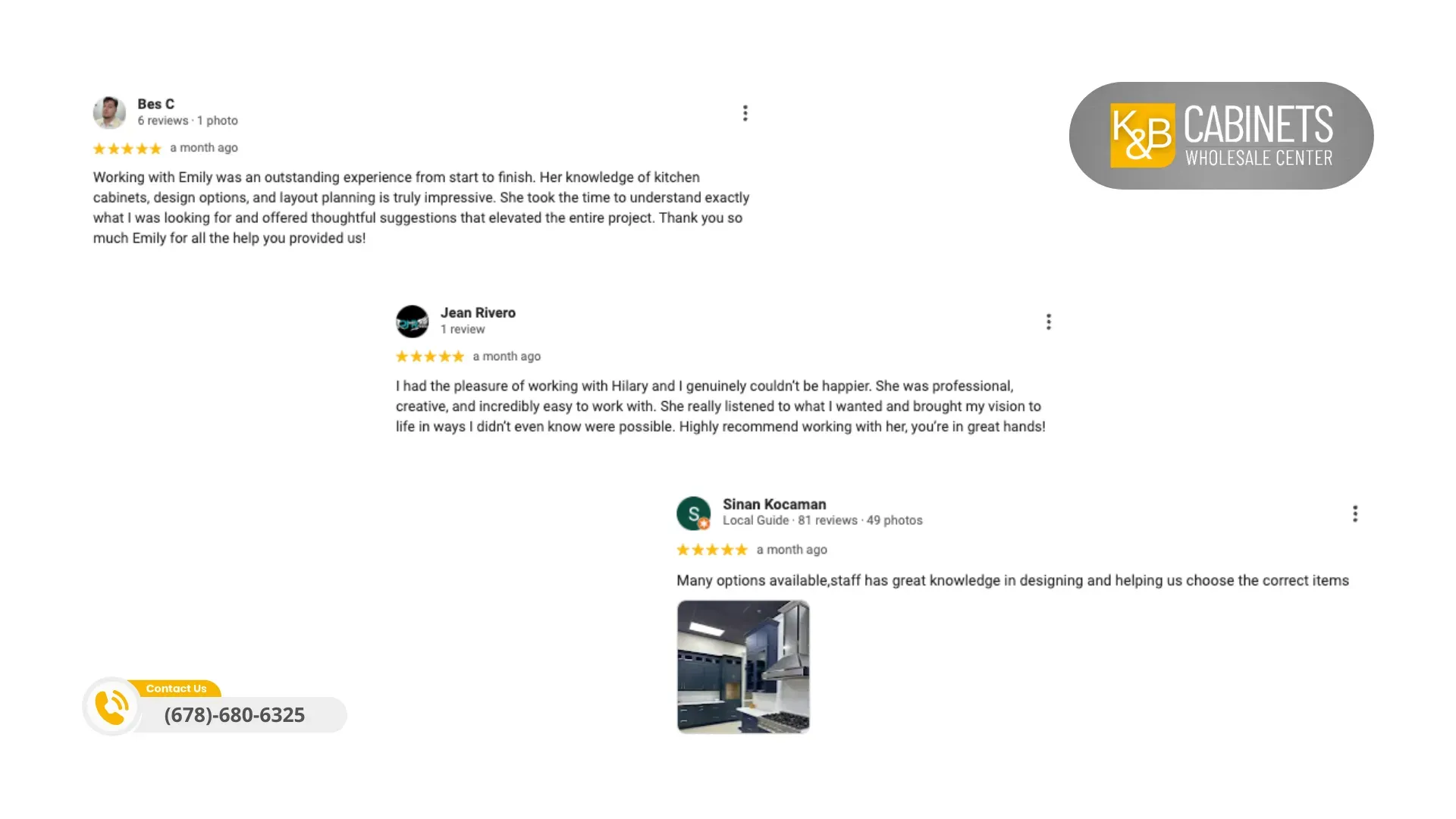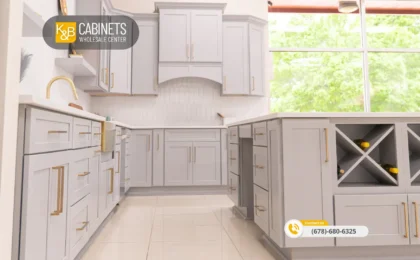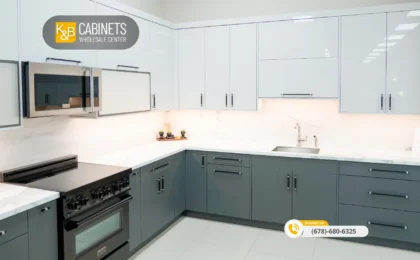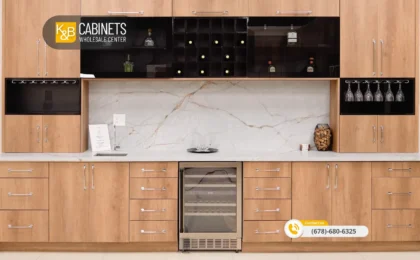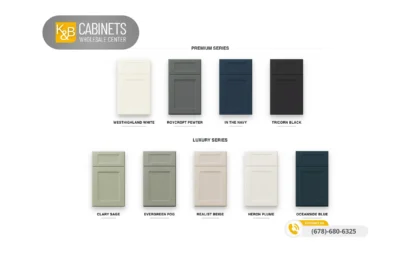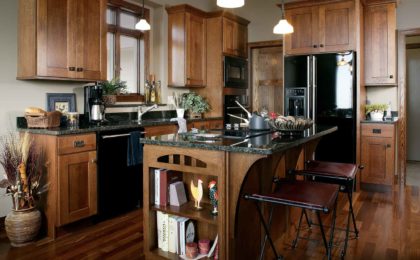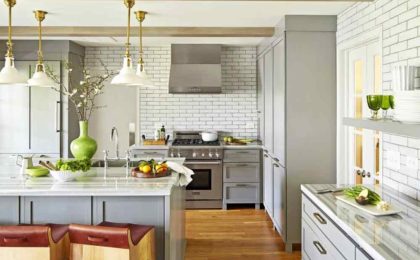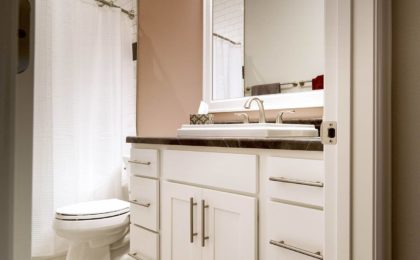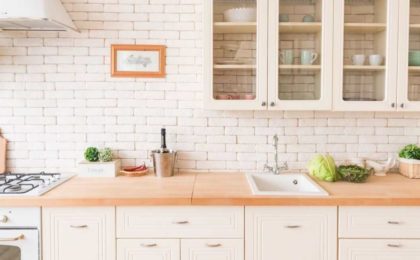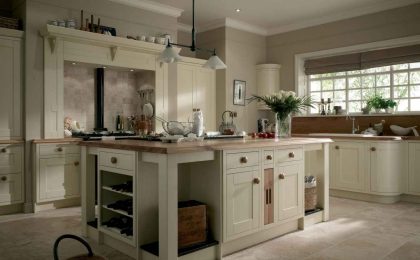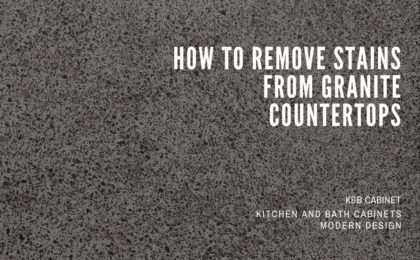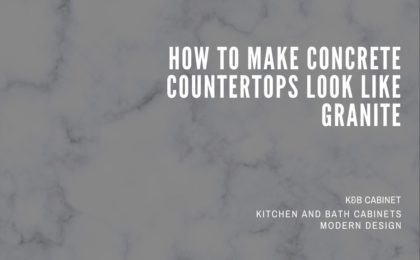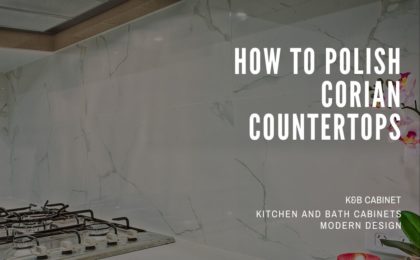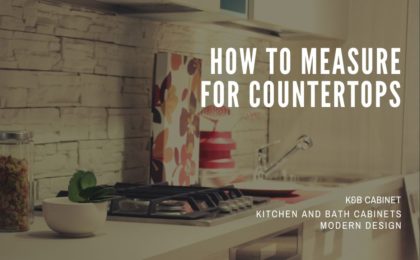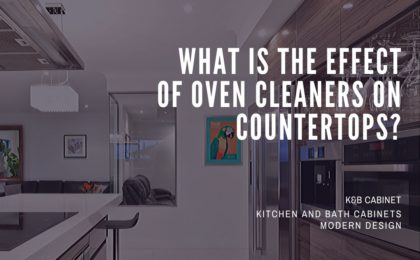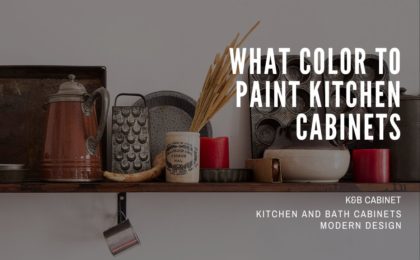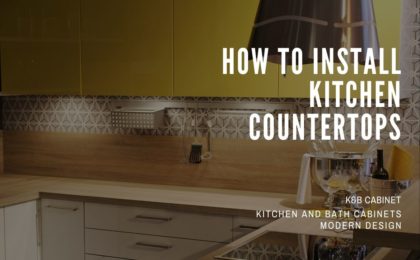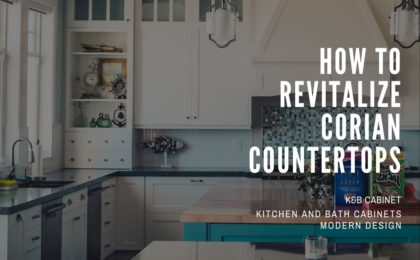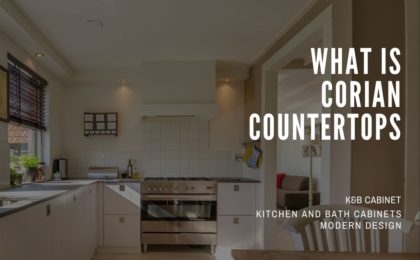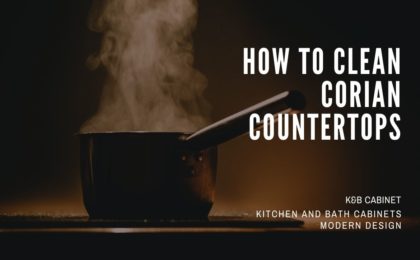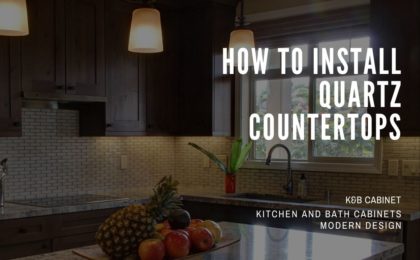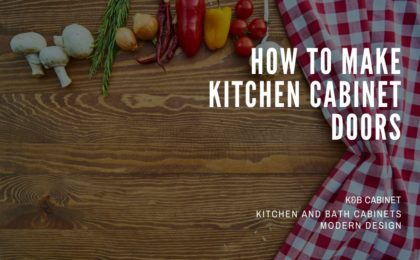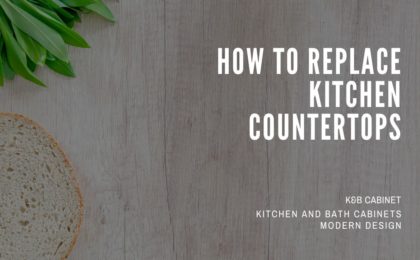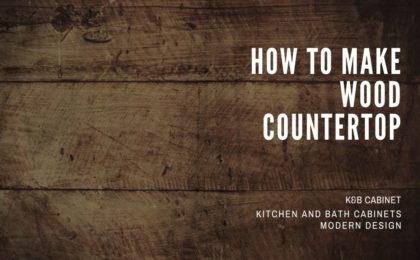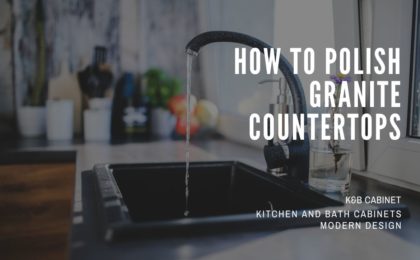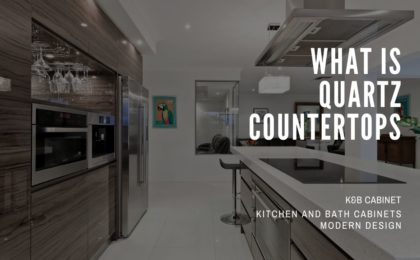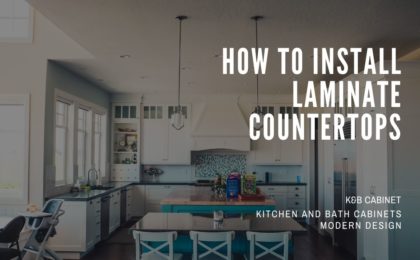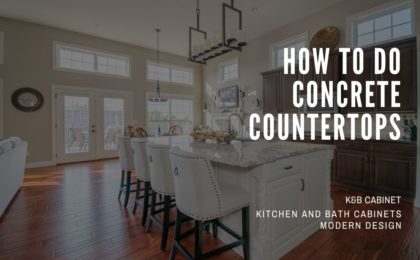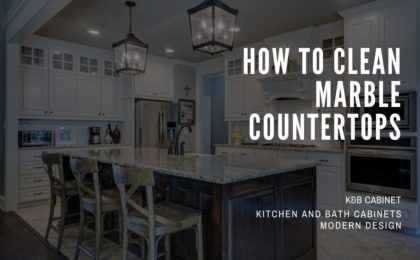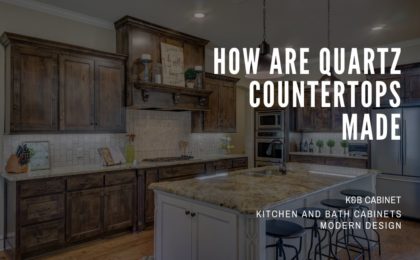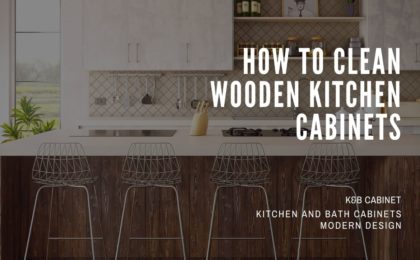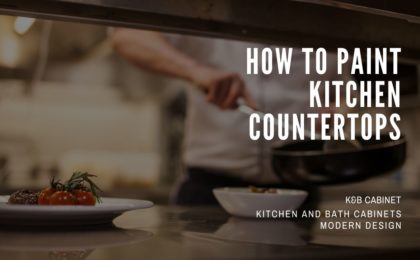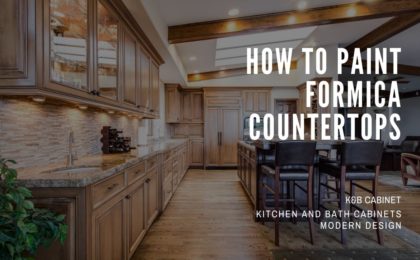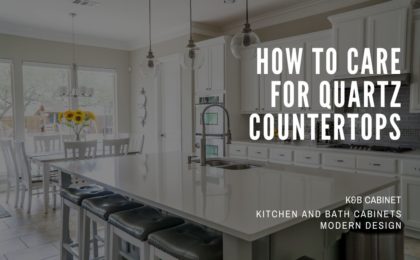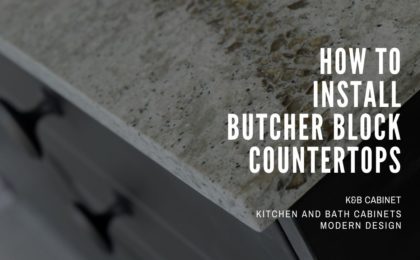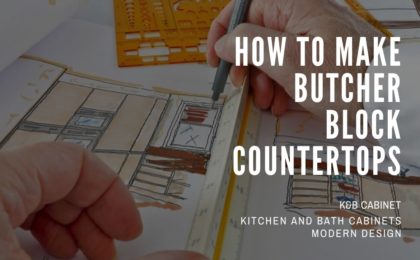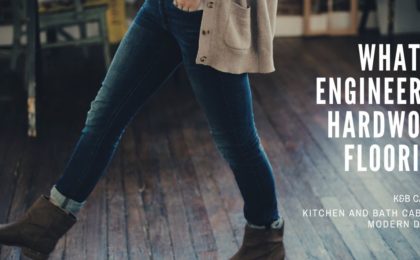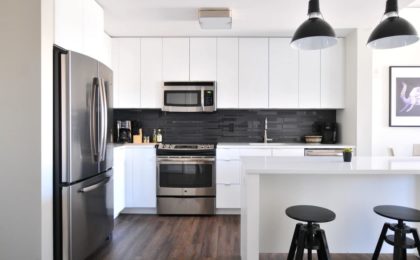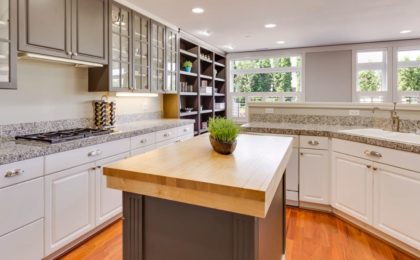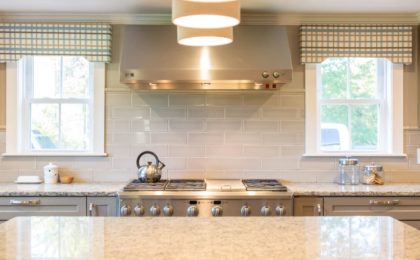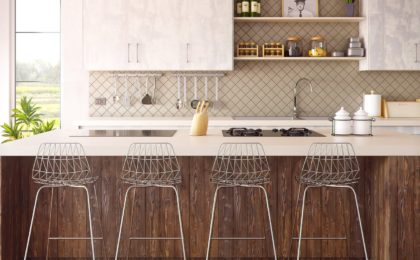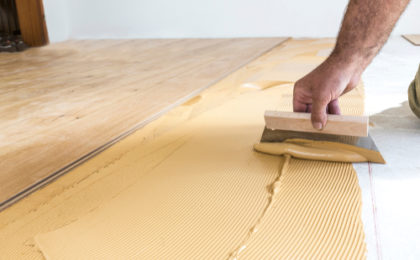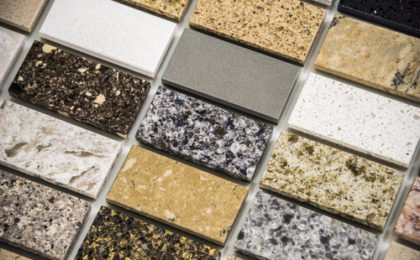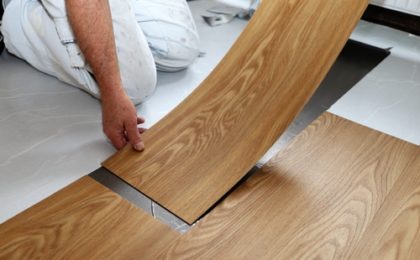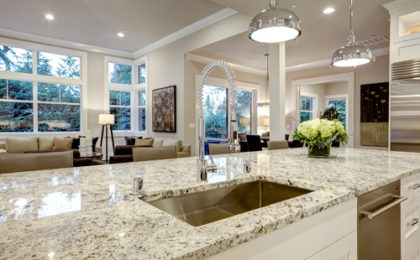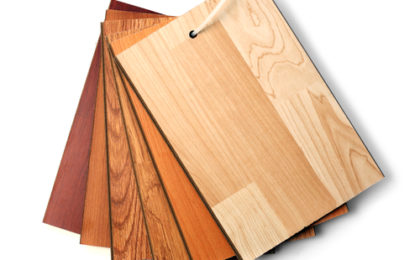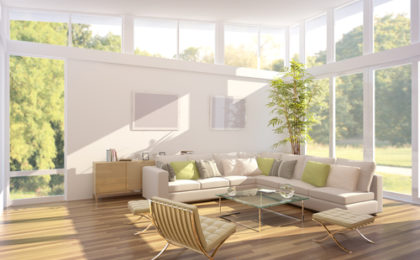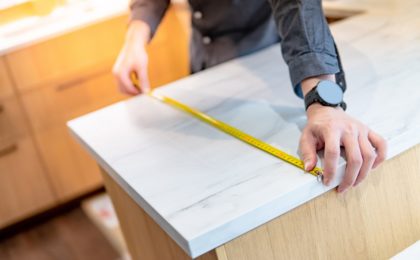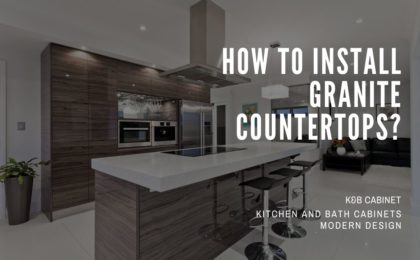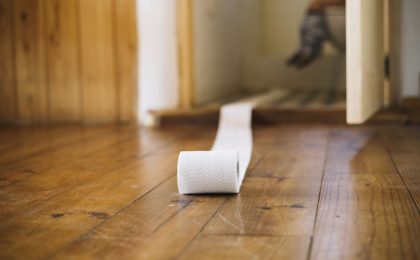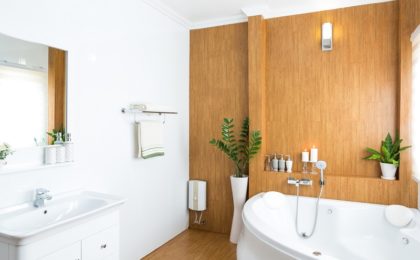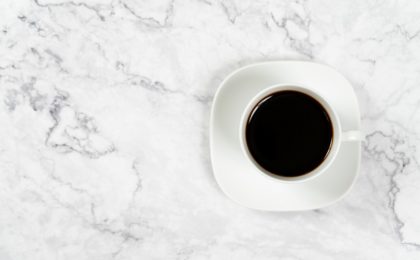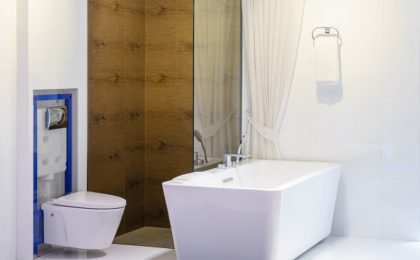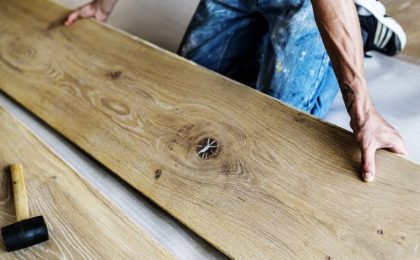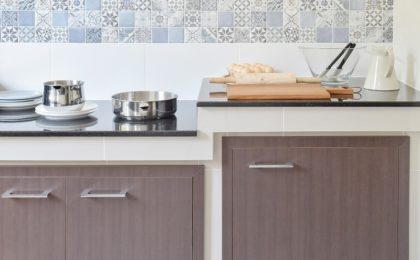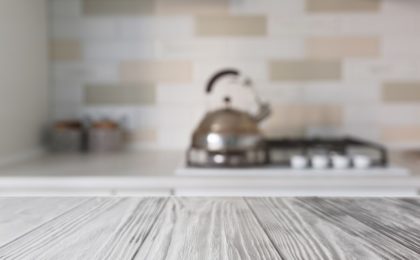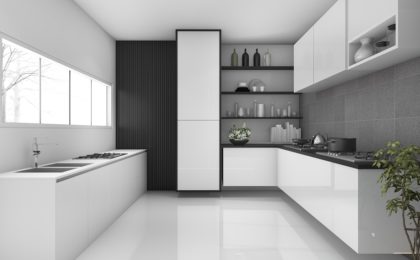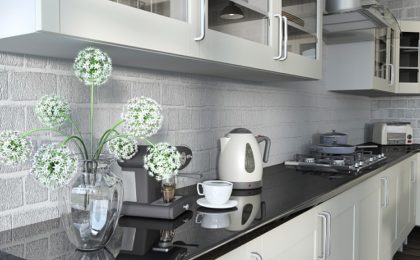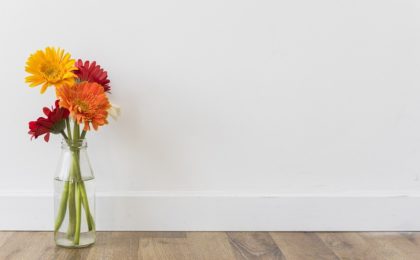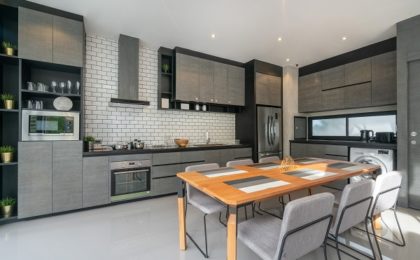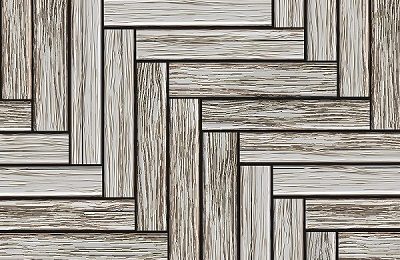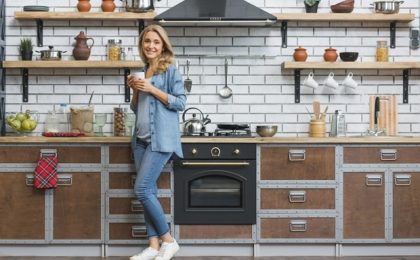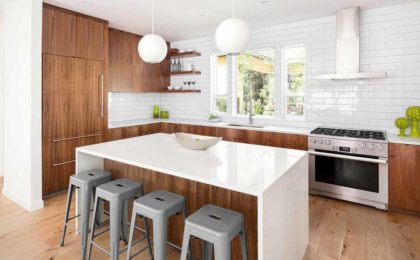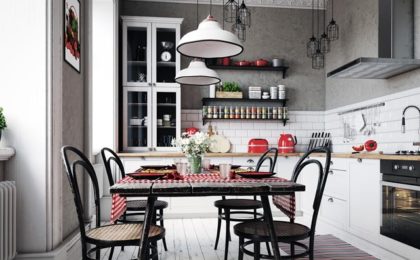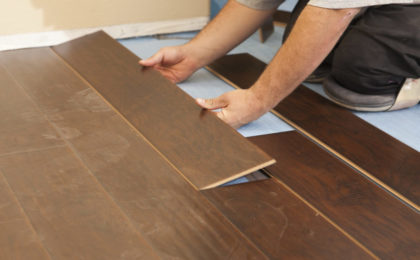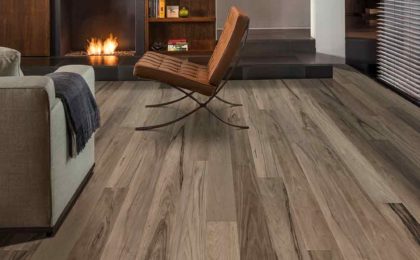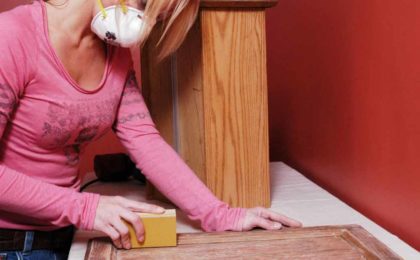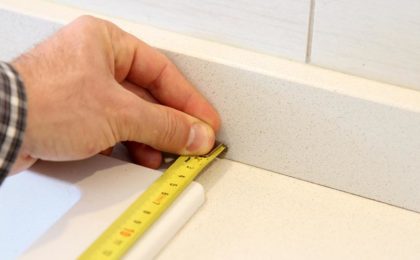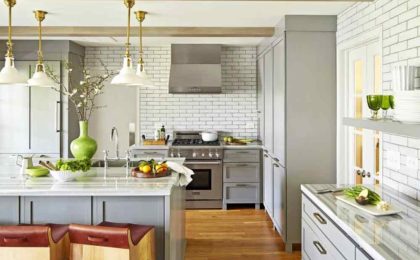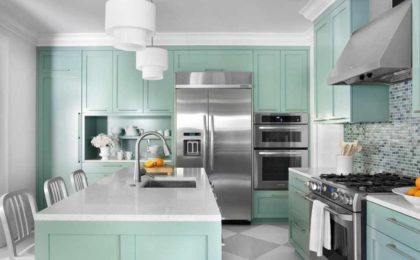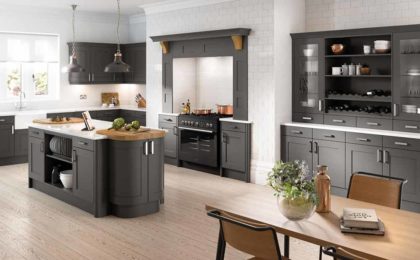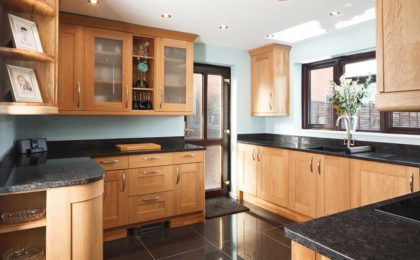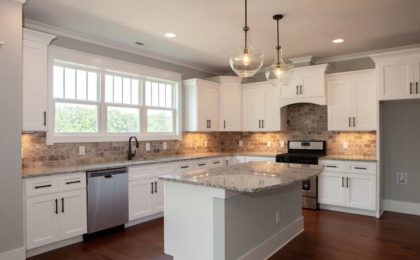5 Custom Finishing Ideas to Elevate Your Cabinets
Introduction to Custom Finishing for Cabinets
When it comes to transforming a kitchen or bathroom space, few elements have as much impact as the cabinet finish. Custom finishing represents the pinnacle of personalized design, allowing homeowners to create cabinetry that perfectly reflects their style while ensuring durability and functionality. Understanding the various finishing options available can help make informed decisions that will enhance both the aesthetic appeal and long-term value of any space.
Key Takeaways for 5 Custom Finishing Ideas to Elevate Your Cabinets
- Custom Finishing Transforms Cabinets: Personalized finishes give cabinets a unique look, increase durability, and can significantly enhance the value and style of your kitchen or bathroom.
- Painted Finishes Offer Versatility: With limitless color options, painted finishes can suit both traditional and contemporary designs. Popular trends range from classic whites and grays to bold blues and greens, with matte, satin, and high-gloss sheens each offering distinct visual effects.
- Glazed Finishes Add Depth and Elegance: Glazing creates luxurious, layered looks by highlighting cabinet details and contours, making them ideal for ornate or raised-panel cabinet styles.
- Stained Wood Showcases Natural Beauty: Staining enhances the grain and character of wood. The choice between light and dark stains fundamentally impacts the room’s mood, and particular wood species—like oak, maple, and cherry—take stain exceptionally well.
- Distressed Finishes Provide Rustic Charm: By mimicking natural wear and age, distressed finishes lend warmth and character, especially to farmhouse or country-inspired designs.
- High-Gloss Lacquer Makes a Bold Statement: This finish delivers a sleek, mirror-like surface perfect for modern kitchens, amplifying light and color vibrancy, but requires a professional application and careful maintenance.
- Maintenance Matters for Longevity: The durability of your custom finish depends on routine care, proper cleaning methods, and prompt attention to any surface damage, thereby extending the life and beauty of your cabinetry.
- Finish Selection Should Match Lifestyle and Style: Choose cabinet finishes that complement your home’s architectural style, lighting, and practical needs—balancing appearance, durability, and maintenance.
- Custom Finishing Can Boost Resale Value: Professionally applied, neutral, and timeless finishes tend to appeal more to buyers and protect your investment, while bolder choices may best suit personal enjoyment over resale.
- Professional Application Makes a Difference: Achieving high-quality, durable custom finishes requires expertise; professional finishers ensure smooth coverage, longevity, and the desired aesthetic effect.
Article Contents
What Is Custom Cabinet Finishing?
Custom cabinet finishing refers to the specialized process of applying protective and decorative coatings to cabinet surfaces. Unlike standard factory finishes, custom finishing allows for complete control over color, texture, sheen level, and overall appearance. This process involves multiple steps, including surface preparation, primer application, and the careful layering of chosen finishes to achieve the desired look.
The custom finishing process typically begins with thorough surface preparation, which may include sanding, cleaning, and priming. Professional finishers then apply the chosen coating system, whether it’s paint, stain, glaze, or lacquer, using specialized techniques to ensure smooth, even coverage. This attention to detail results in a finish that not only looks exceptional but also provides superior protection against daily wear and tear.
Why Custom Finishing Matters in Kitchen Design
In modern kitchen design, cabinets serve as the foundation of the overall aesthetic. Custom finishing elevates standard cabinetry into design statements that can complement any architectural style or personal preference. This level of customization enables homeowners to achieve looks that are simply not available with pre-finished options, from subtle color variations to bold, contemporary statements.
Custom finishes also provide the flexibility to coordinate perfectly with existing design elements, including countertops, backsplashes, and flooring. This coordination creates a cohesive look that enhances the overall design impact of the space. Additionally, custom finishing allows for the incorporation of unique techniques such as antiquing, color washing, or specialty textures that add character and visual interest.
The Role of Finish in Aesthetics and Durability
The finish applied to cabinets serves dual purposes: aesthetic enhancement and protection. From an aesthetic standpoint, custom finishing can dramatically alter the perceived style of cabinetry, transforming traditional designs into contemporary showpieces or adding rustic charm to modern layouts. The finish affects how light interacts with the surface, influencing the overall brightness and atmosphere of the space.
Durability is equally important, as kitchen cabinets face constant exposure to moisture, heat, grease, and frequent handling. High-quality custom finishes create protective barriers that resist staining, scratching, and moisture damage. This protection not only maintains the appearance of the cabinets over time but also extends their functional lifespan, making custom finishing a wise investment in long-term home value.
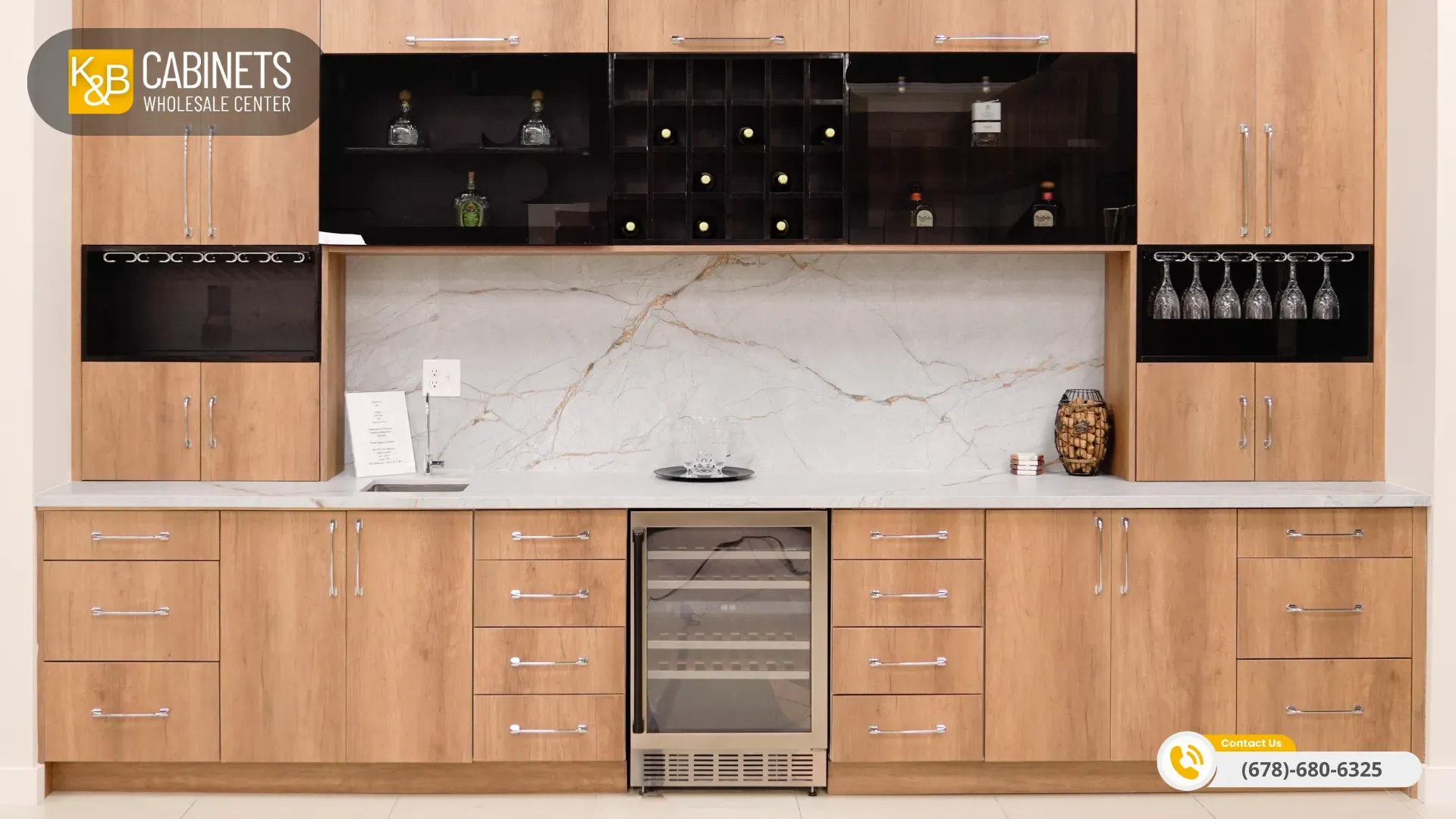
1. Painted Finishes: Timeless and Versatile
Painted finishes remain one of the most popular choices for custom cabinet finishing due to their versatility and timeless appeal. Paint offers an unlimited range of color options and can be applied to virtually any cabinet material, making it an ideal choice for homeowners seeking complete design flexibility. The smooth, uniform appearance of painted cabinets offers a clean, sophisticated look that complements both traditional and contemporary settings.
The process of achieving a professional painted finish involves multiple coats and careful attention to detail. Quality painted finishes typically include a high-grade primer followed by two or more coats of premium paint, with light sanding between coats to ensure a smooth finish. This meticulous process results in a durable finish that resists chipping, scratching, and discoloration over time.
Popular Color Choices for Modern Kitchens
Current trends in painted cabinet finishes favor both bold statements and subtle sophistication. Classic white remains incredibly popular due to its ability to make spaces appear larger and brighter while providing a neutral backdrop for other design elements. Soft grays have gained significant popularity, offering a contemporary alternative to white while maintaining versatility in design coordination.
Navy blue and forest green have emerged as popular choices for homeowners seeking to make bold design statements. These rich, deep colors work particularly well on kitchen islands or lower cabinets, creating visual interest while maintaining a sophisticated look. Warm neutrals such as greige (gray-beige) and mushroom provide earthy alternatives that complement natural materials and create cozy, inviting atmospheres.
Two-tone approaches have also gained popularity, with homeowners choosing to combine different colors within the same kitchen. This technique often involves painting upper and lower cabinets in complementary colors, or highlighting an island with a contrasting finish. Such approaches add visual depth and create focal points within the kitchen design.
Matte vs. Glossy: Choosing the Right Sheen
The sheen level of painted finishes significantly impacts both appearance and functionality. Matte finishes offer a sophisticated, contemporary look that minimizes imperfections, creating a smooth, velvety appearance. These finishes are excellent at hiding fingerprints and minor scratches, making them particularly suitable for families with children or high-traffic kitchens.
Semi-gloss and satin finishes offer a balance between aesthetics and practicality. These sheens provide subtle luster that enhances color depth while maintaining good durability and cleanability. Semi-gloss finishes are particularly effective in kitchens where easy cleaning is a priority, as they resist moisture and can be wiped down easily without damage to the finish.
High-gloss painted finishes create dramatic, mirror-like surfaces that reflect light, making colors appear more vibrant. While these finishes require more maintenance and show imperfections more readily, they create stunning visual impact and work particularly well in contemporary or minimalist design schemes.
Maintenance Tips for Painted Cabinets
Proper maintenance is essential for preserving the beauty and durability of painted cabinet finishes. Regular cleaning with mild soap and water helps prevent the buildup of grease and grime that can dull the finish over time. It’s important to avoid abrasive cleaners or scrubbing pads that can damage the paint surface; instead, use soft cloths or microfiber materials for cleaning.
For stubborn stains or buildup, a solution of warm water and gentle dish soap usually proves effective. After cleaning, thoroughly drying the surfaces prevents water spots and potential moisture damage. Regular inspection of high-wear areas, such as cabinet handles and drawer fronts, allows for early detection of any wear that may require touch-up painting.
Touch-up procedures should be performed as needed to maintain the integrity of the finish. Keeping small amounts of the original paint for future touch-ups ensures accurate color matching. Professional refinishing may be necessary every 10-15 years, depending on usage and care, but proper maintenance can significantly extend the life of painted finishes.
2. Glazed Finishes: Adding Depth and Elegance
Glazed finishes represent one of the most sophisticated options in custom cabinet finishing, offering unparalleled depth and visual interest. This technique involves applying a translucent coating over a base finish, creating subtle color variations and highlighting the natural contours of cabinet doors and frames. The result is a rich, layered appearance that adds elegance and character to any kitchen or bathroom design.
The glazing process requires considerable skill and artistry, as the glaze must be applied and manipulated while still workable to achieve the desired effect. Professional finishers use various techniques including wiping, brushing, and antiquing to create different looks, from subtle enhancement to dramatic contrast. This level of craftsmanship makes glazed cabinets a premium choice for discerning homeowners.
What Is Glazing and How Is It Applied?
Glazing is a specialized finishing technique that involves applying a semi-transparent coating over a completely cured base finish. The glaze can be tinted to various colors and is manipulated while wet to create different effects. Common glazing techniques include wiping excess glaze from raised areas while leaving it in recesses, creating natural-looking aging and wear patterns.
The application process begins with a fully finished base coat, typically paint or stain, which must be completely cured before glazing begins. The glaze is then applied using brushes, rags, or specialized tools, depending on the desired effect. Working time is limited, so professional finishers must work efficiently to achieve consistent results across all cabinet surfaces.
Different manipulation techniques create varying effects. Wiping techniques highlight raised panel details and create subtle shading, while brush techniques can create more linear patterns. Ragging and sponging techniques produce textured appearances that add visual interest and depth. The final step involves applying a protective topcoat to seal and preserve the glazed finish.
Best Glazing Colors for Cabinetry
The choice of glaze color dramatically affects the final appearance of glazed cabinets. Traditional brown and amber glazes remain popular choices, particularly over cream or beige base colors, creating warm, inviting appearances reminiscent of Old World craftsmanship. These combinations work exceptionally well in traditional and transitional kitchen designs.
Gray glazes have gained popularity in recent years, offering a more contemporary approach to the glazing technique. When applied over white or light gray base colors, gray glazes create sophisticated, updated looks that maintain the depth and interest of traditional glazing while feeling fresh and current. This approach works particularly well in transitional and contemporary designs.
Black glazes create dramatic contrast and can be used to achieve various effects depending on the base color. Over light colors, black glazing creates striking definition and can give new cabinets an antique appearance. Over darker base colors, black glazing adds subtle depth and richness without overwhelming contrast.
Ideal Cabinet Styles for Glazed Finishes
Glazed finishes work best on cabinet styles with raised details that can showcase the glazing technique. Traditional raised panel doors are ideal candidates for glazing, as the technique naturally highlights the panel edges and frame details. Cathedral arch doors and other ornate styles also benefit significantly from glazing applications.
Shaker-style cabinets, while simpler in design, can also be enhanced with glazing, particularly when the technique is applied subtly to highlight the frame and panel edges. The clean lines of Shaker doors provide an excellent canvas for glazing that adds interest without overwhelming the fundamental simplicity of the style.
Beadboard and other textured cabinet styles benefit greatly from glazing, as the technique can emphasize texture details and create additional visual depth. However, very flat, contemporary door styles may not be ideal candidates for glazing, as there are fewer surface variations to highlight with the technique.
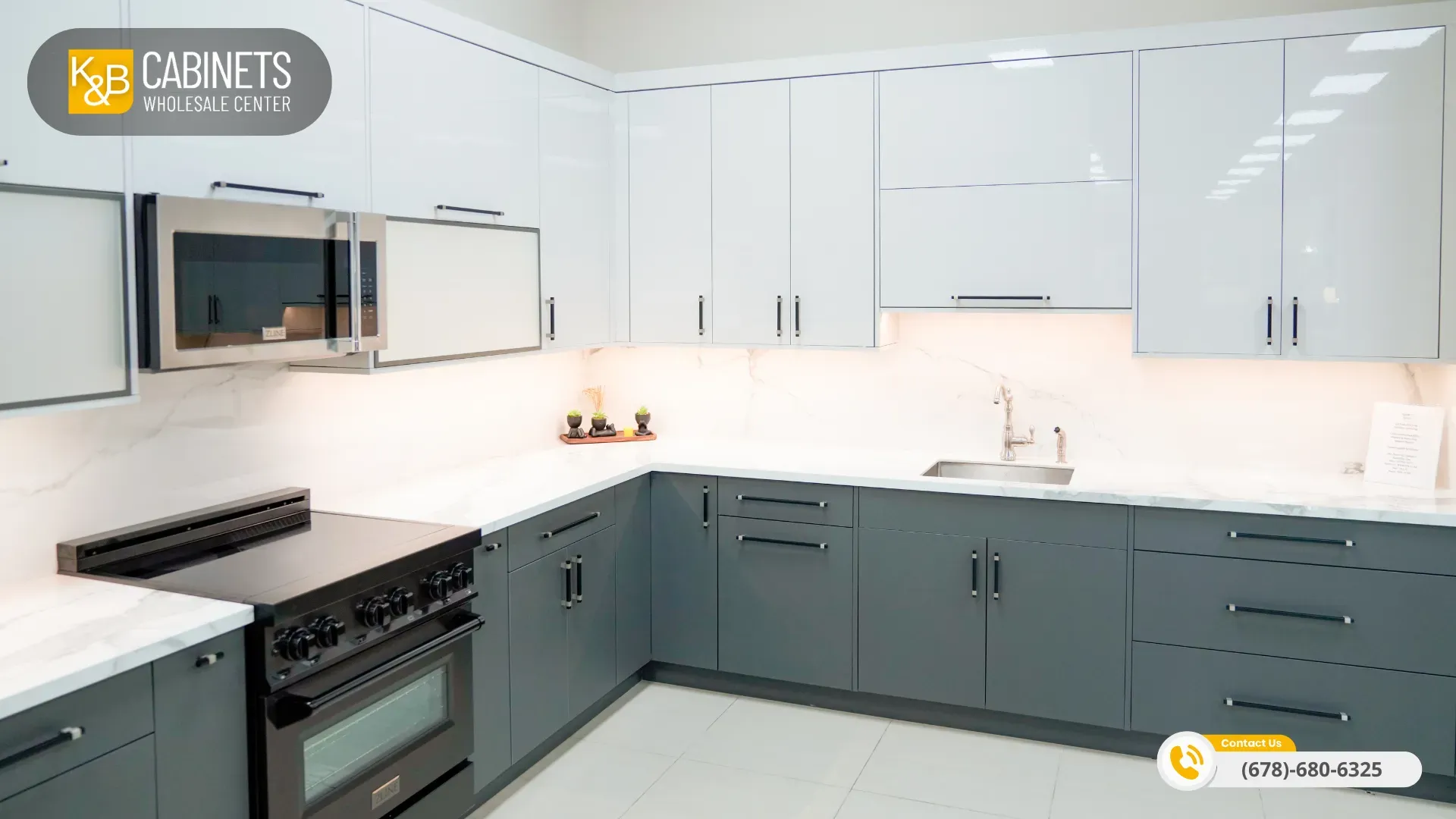
3. Stained Wood Finishes: Highlighting Natural Beauty
Stained wood finishes celebrate the inherent beauty of natural wood grain while providing protection and color enhancement. This custom finishing approach is ideal for homeowners who appreciate the warmth and character that only real wood can provide. Wood staining allows the natural grain patterns to show through while adjusting the color to complement the overall design scheme.
The staining process involves applying colored penetrating solutions that are absorbed into the wood fibers, creating rich, deep colors that enhance rather than hide the natural wood characteristics. Unlike paint, which sits on the surface, stain becomes part of the wood itself, creating a finish that ages gracefully and can often be refreshed without complete refinishing.
Light vs. Dark Stains: Which Suits Your Style?
The choice between light and dark wood stains significantly impacts the overall feel of the kitchen space. Light stains, including natural, honey, and golden oak tones, create bright, airy atmospheres that make spaces feel larger and more open. These finishes work particularly well in smaller kitchens or spaces with limited natural light, as they help reflect and distribute available light throughout the room.
Light stained finishes also provide excellent versatility in design coordination, complementing a wide range of countertop materials, backsplashes, and decorative elements. They create casual, welcoming environments that work well in country, traditional, and transitional design schemes. Additionally, light stains tend to show less dust and fingerprints than darker alternatives.
Dark stains, including walnut, ebony, and mahogany tones, create dramatic, sophisticated appearances that add richness and formality to kitchen designs. These finishes work exceptionally well in larger spaces with ample natural or artificial lighting, as they can absorb light and create intimate, cozy atmospheres. Dark stained cabinets serve as striking focal points and provide excellent contrast with light-colored countertops and backsplashes.
The choice between light and dark stains often depends on the overall design goals and the existing architectural elements of the space. Light stains suit casual, relaxed environments, while dark stains lean toward formal, elegant atmospheres.
Best Wood Types for Staining
Different wood species accept stain differently, making wood selection crucial for achieving desired results. Oak remains one of the most popular choices for stained cabinets due to its prominent grain pattern and excellent stain absorption. Red oak provides warm undertones that complement most stain colors, while white oak offers a more neutral base that works well with both warm and cool stain tones.
Maple is another excellent choice for staining, offering a more subtle grain pattern that creates smooth, even stain distribution. Cherry wood provides a natural warmth and ages beautifully, developing richer tones over time, even without staining. However, cherry can be challenging to stain evenly due to its varying density, requiring skilled application techniques.
Hickory offers dramatic grain patterns that create striking visual interest when stained. This wood species is particularly effective with light to medium stains that highlight its natural character. Pine and other softwoods can be stained but often require special preparation to achieve even color distribution, as they tend to absorb stain unevenly.
Stain Protection and Long-Term Care
Protecting stained wood finishes requires appropriate topcoat applications that preserve the wood while maintaining its natural appearance. Polyurethane topcoats provide excellent durability and moisture protection, available in various sheen levels from matte to high-gloss. Water-based polyurethanes offer clarity and quick drying times, while oil-based versions provide warmth and depth.
Lacquer topcoats create exceptionally smooth, durable finishes that are particularly well-suited to kitchen cabinets. These finishes cure to a hard, protective surface that resists scratches, moisture, and chemical damage. However, lacquer application requires professional equipment and expertise to achieve optimal results.
Regular maintenance of stained cabinets involves gentle cleaning with products specifically designed for wood finishes. Avoiding harsh chemicals and excessive moisture helps preserve both the stain and topcoat integrity. Periodic application of quality furniture wax or conditioner can help maintain the wood’s natural luster and provide additional protection against environmental factors.
4. Distressed Finishes: Rustic Charm and Character
Distressed finishes have become increasingly popular among homeowners seeking to add character and charm to their kitchen spaces. This custom finishing technique artificially ages new cabinets to create the appearance of natural wear and patina that would typically develop over decades of use. The result is cabinetry with a unique personality and rustic appeal that serves as a focal point in kitchen design.
The distressing process involves various techniques designed to simulate natural aging patterns, including strategic sanding, denting, and color layering. Skilled craftsmen study how wood naturally ages and wears to replicate these patterns authentically. Distressed cabinet finishes can range from subtle aging effects to heavily weathered appearances, depending on the desired aesthetic outcome.
Techniques Used to Create a Distressed Look
Professional distressing employs multiple techniques to create authentic aging effects. Strategic sanding removes finish from areas that would naturally wear over time, such as cabinet edges, corners, and high-touch areas around handles and knobs. This selective removal reveals underlying wood or base colors, creating natural-looking wear patterns.
Denting and gouging techniques use various tools to create small imperfections that simulate decades of use. Chains, hammers, awls, and other implements are carefully used to create realistic dings, scratches, and gouges in strategic locations. The key to successful distressing lies in creating random, natural-looking imperfections rather than uniform patterns.
Color layering is another essential technique in creating distressed finishes. Multiple paint colors are applied and selectively removed to simulate the natural color changes that occur as paint ages and wears. This might involve applying a dark base color, followed by lighter colors that are partially sanded away to reveal the underlying layers.
Fly specking and crackling techniques add additional authenticity to distressed cabinet finishes. Fly specking involves spattering small dark spots across the surface to simulate age spots and insect marks, while crackling creates the appearance of paint that has dried and cracked over time.
Where Distressed Cabinets Work Best
Distressed cabinet finishes work exceptionally well in farmhouse, country, and rustic design schemes where authenticity and character are primary goals. These finishes help create warm, welcoming environments that feel lived-in and comfortable. They’re particularly effective in homes with architectural elements that support casual, relaxed design approaches.
Open floor plans that combine kitchen, dining, and living areas often benefit from distressed finishes, as they help create a cohesive, casual atmosphere throughout the connected spaces. The character and visual interest provided by distressed finishes help break up large expanses of cabinetry and create focal points within open designs.
Distressed cabinets also work well in vacation homes, lake houses, and other retreat settings where a relaxed, informal atmosphere is desired. The casual, aged appearance of distressed finishes complements natural materials and outdoor connections common in these settings.
However, distressed finishes may not be appropriate in formal, contemporary, or minimalist design schemes where clean lines and smooth surfaces are preferred. The character and visual texture of distressed finishes can conflict with sleek, modern aesthetics.
Pairing Distressed Finishes with Hardware and Decor
Hardware selection plays a crucial role in complementing distressed cabinet finishes. Aged bronze, antique brass, and oil-rubbed bronze hardware finishes coordinate beautifully with distressed cabinetry, enhancing the overall aged appearance. These hardware finishes often feature intentional patina and wear marks that complement the cabinet distressing.
Wrought iron and black iron hardware also work well with distressed finishes, particularly in farmhouse and industrial design schemes. These harder finishes provide contrast while maintaining the rustic, authentic feel of the overall design. Cup pulls, bin pulls, and other traditional hardware styles complement the historical character of distressed finishes.
Decorative elements should support the casual, aged aesthetic created by distressed cabinets. Natural materials such as stone, brick, and reclaimed wood work particularly well as complementary elements. Vintage or vintage-inspired accessories, including pottery, baskets, and weathered metals, enhance the overall design cohesion.
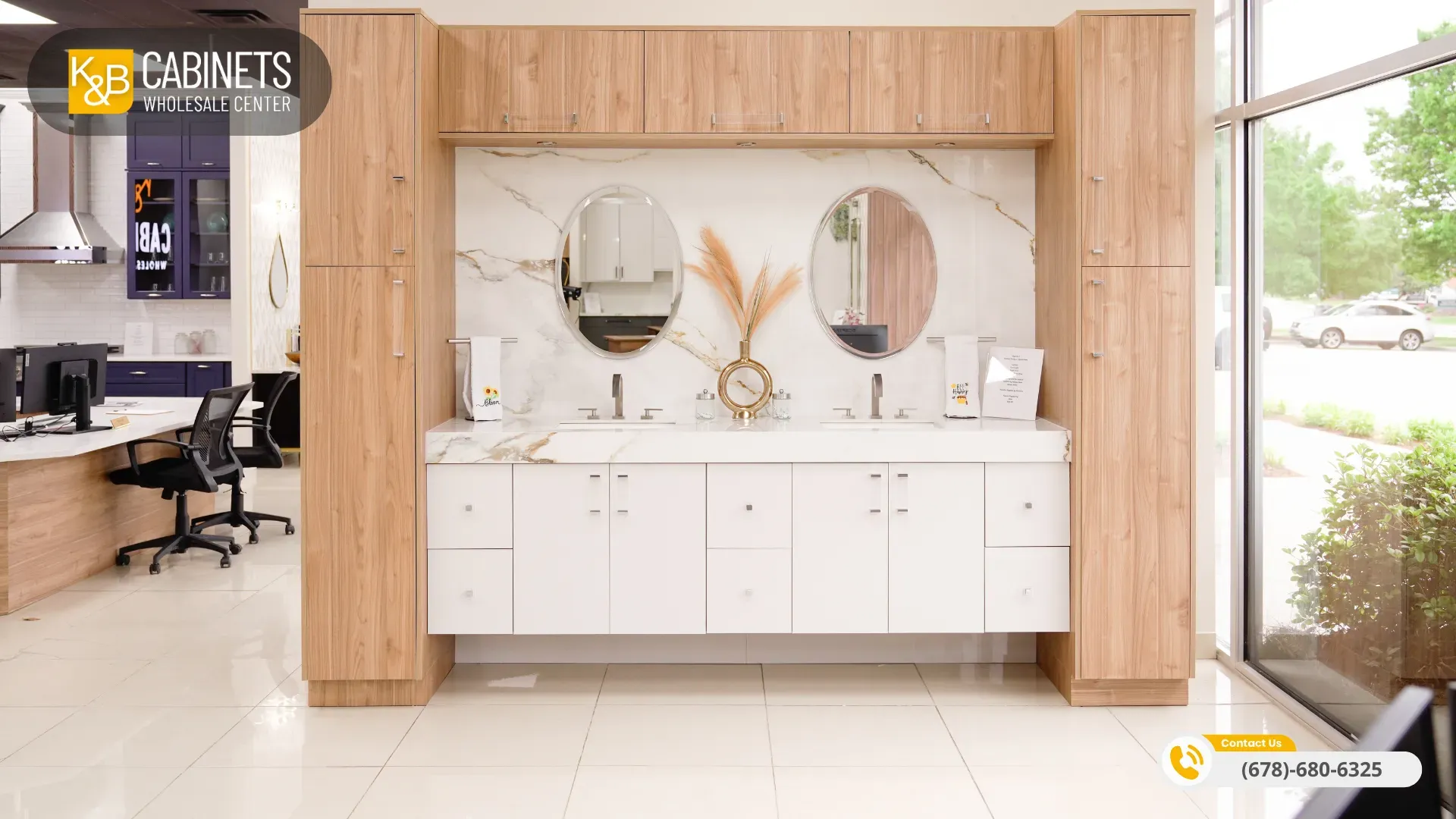
5. High-Gloss Lacquer: Bold and Contemporary
High-gloss lacquer finishes represent the pinnacle of contemporary cabinet finishing, offering mirror-like surfaces that create dramatic visual impact. This premium finishing option provides exceptional durability and creates stunning reflective surfaces that can make spaces appear larger and brighter. Lacquered cabinets are particularly popular in modern and ultra-contemporary kitchen designs where sleek, sophisticated appearances are desired.
The lacquer finishing process involves multiple coats of specially formulated materials that cure to create exceptionally hard, smooth surfaces. Unlike other finishes that may show brush marks or texture, properly applied lacquer creates perfectly smooth surfaces with outstanding clarity and depth. This level of finish quality requires professional application and specialized equipment to achieve optimal results.
How High-Gloss Lacquer Is Applied
The application of high-gloss lacquer requires controlled environments and professional expertise to achieve flawless results. The process begins with meticulous surface preparation, including multiple sanding stages with progressively finer grits to create perfectly smooth substrates. Any imperfections in the base surface will be magnified by the high-gloss finish, making preparation critical.
Primer application follows surface preparation, with specialized primers designed to promote adhesion and provide a uniform base for the lacquer coats. The primer must be sanded smooth before lacquer application begins, as any texture or imperfections will show through the final finish.
Lacquer application typically involves spray techniques using professional equipment in dust-free environments. Multiple thin coats are applied, with light sanding between coats to ensure smoothness and adhesion. The final coats are applied without sanding to preserve the high-gloss surface quality.
Curing times for lacquer finishes vary depending on the specific products used and environmental conditions. Complete cure may take several days to weeks, during which the finish continues to harden and develop its final properties. Proper curing is essential for achieving maximum durability and performance.
Color Trends in Lacquered Cabinets
White remains the most popular color choice for high-gloss lacquered cabinets, creating clean, sophisticated appearances that work well in contemporary designs. High-gloss white finishes reflect maximum light and create bright, airy atmospheres while providing a neutral backdrop for colorful accessories and artwork.
Bold colors have gained popularity in lacquered finishes, with deep blues, emerald greens, and rich burgundies creating stunning focal points in kitchen designs. These dramatic colors work particularly well on kitchen islands or accent cabinets, creating visual interest while maintaining sophistication.
Black lacquered cabinets create ultimate drama and sophistication, particularly effective in larger kitchens with ample lighting. Black high-gloss finishes work well in ultra-modern designs and can create a striking contrast with light-colored countertops and backsplashes.
Metallic lacquer finishes, including silver, bronze, and copper tones, add glamour and visual interest to contemporary designs. These finishes work particularly well as accent elements or on specialty cabinets, such as those in bar areas or display units.
Cleaning and Preserving High-Gloss Finishes
High-gloss lacquer finishes require specific care and maintenance to preserve their mirror-like appearance. Regular cleaning with microfiber cloths and gentle, non-abrasive cleaners helps maintain clarity and prevents the buildup of fingerprints and smudges that are readily visible on high-gloss surfaces.
Water spots and fingerprints should be removed promptly to prevent etching or permanent marking of the finish surface. Specialized cleaners designed for high-gloss finishes are often more effective than general-purpose cleaners, helping to maintain the finish’s integrity over time.
Avoiding abrasive materials and harsh chemicals is crucial for preserving lacquered surfaces. Steel wool, abrasive pads, and acidic cleaners can permanently damage high-gloss finishes, requiring professional refinishing to repair. Using soft cloths and appropriate cleaning products helps ensure long-term beauty and performance.
Regular inspection of high-wear areas allows for early detection of any damage that might require professional attention. While lacquer finishes are highly durable, they can be damaged by impacts or sharp objects. Prompt repair helps prevent further damage and maintains the overall appearance of the cabinetry.
| Finish Type | Best For | Key Benefit | Maintenance Level | Style Vibe |
|---|---|---|---|---|
| Painted | Versatile, any kitchen or bath style | Unlimited colors, clean look | Moderate (depends on finish sheen) | Classic/Modern |
| Glazed | Highlighting detail, raised panels | Adds depth & elegance | Moderate | Traditional/Rustic |
| Stained Wood | Natural wood lovers, open grain | Enhances grain, warm look | Low to moderate | Timeless |
| Distressed | Farmhouse, vintage, rustic spaces | Aged character, unique texture | Low to moderate | Rustic/Antique |
| High-Gloss Lacquer | Modern, sleek, bold interiors | Mirror finish, dramatic effect | High (requires careful upkeep) | Contemporary |
Choosing the Right Custom Finish for Your Cabinets
Selecting the appropriate custom finish for cabinetry involves careful consideration of multiple factors that affect both immediate satisfaction and long-term performance. The decision should strike a balance between aesthetic preferences and practical considerations, such as maintenance requirements, durability expectations, and budget constraints. Understanding how different finishes perform in various environments helps ensure choices that will provide satisfaction for years to come.
The relationship between finish choice and overall design goals is crucial to consider. Custom finishing should enhance and support the intended design style rather than conflict with other elements in the space. Successful finish selection considers the big picture of the design while addressing specific functional requirements of the cabinetry.
Factors to Consider: Style, Lighting, Budget
Design style significantly influences appropriate finish choices. Traditional and transitional styles often benefit from glazed finishes, wood stains, or painted finishes in classic colors. In contrast, contemporary designs may call for high-gloss lacquers or bold, vibrant painted colors. Understanding the design language of different styles helps narrow finish options to those that will enhance rather than conflict with the overall aesthetic.
Lighting conditions in the space dramatically affect how finishes appear and perform. Natural light exposure can cause some finishes to fade or change color over time, while artificial lighting can alter color perception. High-gloss finishes reflect light, helping to brighten spaces, while matte finishes absorb light and create more intimate atmospheres. Consider both the quantity and quality of light when selecting finishes.
Budget considerations extend beyond the initial cost of the custom finishing to include long-term maintenance and potential refinishing costs. Some finishes require more frequent maintenance or professional care, which should factor into the total cost of ownership. However, investing in quality finishing often provides better long-term value through enhanced durability and appearance retention.
The timeline for completion also affects finish choices, as some options require longer curing times or more complex application processes. Lacquer finishes typically require longer completion times than painted finishes, which may influence decisions when project timelines are critical.
How Custom Finishing Affects Resale Value
Custom finishing can significantly impact home resale value, but the effect depends on the choices made and their appeal to potential buyers. Neutral, timeless finishes generally provide the best return on investment, as they appeal to the broadest range of buyers and are less likely to appear dated over time.
High-quality custom finishes demonstrate attention to detail and quality that discerning buyers appreciate. Professional finishing work typically exhibits superior durability and appearance compared to DIY or lower-quality alternatives, which can impact buyer perception of the overall home quality.
Bold or highly personalized finish choices may limit appeal to some buyers, potentially affecting resale value. While unique finishes can create stunning design statements, conservative choices often provide better resale security. However, in markets where distinctive design features are valued, unique finishes may enhance appeal and value.
The condition of the custom finishing at the time of sale significantly impacts its value. Well-maintained finishes that still look fresh and contemporary add value, while worn or outdated finishes may detract from overall home appeal. Quality finishing that ages gracefully provides the best long-term value protection.
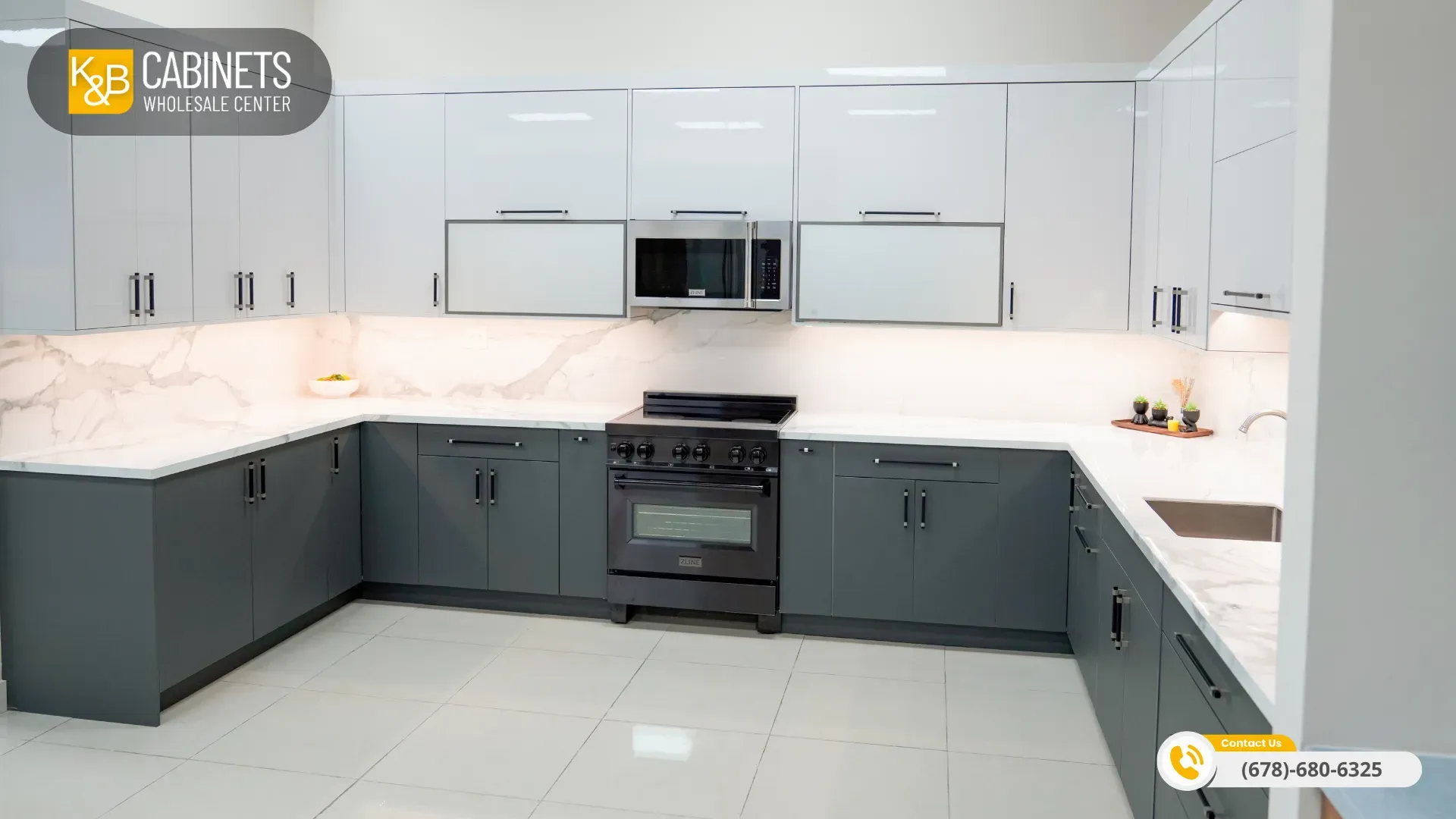
FAQs for 5 Custom Finishing Ideas to Elevate Your Cabinets
How can I get a professional finish on cabinets?
To achieve a professional finish on kitchen cabinets, start by thoroughly cleaning and sanding all surfaces, then apply a high-quality primer if painting. Opt for cabinet-specific paints or stains, such as satin, semi-gloss, or high-gloss lacquer, for a durable and easy-to-clean sheen. For the smoothest painted finishes or glazed finishes, a paint sprayer is preferred, but foam rollers can also create a refined look. Always allow each coat to dry completely before lightly sanding and applying additional coats. Consider hiring a professional for advanced finishing techniques, like custom distressing, glazing, or achieving a flawless high-gloss cabinet design.
How much does it cost to finish cabinets?
The cost to custom finish or refinish kitchen cabinets typically ranges from $1,500 to $4,500 for an average kitchen, depending on the finish type, cabinet size, and complexity. Expect $4–$15 per square foot for most finished surfaces, with painted or stained wood on the lower end and options like glazed finishes or high-gloss lacquer on the higher end. Custom cabinet finishing methods—such as glazing, distressing, or using special wood stains—add to the price. Labor rates and material choices significantly impact the final cost, so always obtain a detailed quote for your preferred color options and cabinet sheen.
Is it cheaper to refinish cabinets or replace them?
Refinishing your cabinets is almost always significantly cheaper than replacing them. On average, cabinet refinishing costs $1,500–$4,500 for a standard kitchen, while replacing cabinets can cost $2,000–$10,500 for stock units and upwards of $10,000 for custom designs. Custom finishing techniques enable you to transform your kitchen style and enhance cabinet durability for a fraction of the cost of new cabinets, thereby improving resale value and making refinishing the preferred choice for many kitchen renovations.
Should cabinets be gloss or satin?
Choosing between high‑gloss lacquer and satin custom cabinet finishing depends on your style and use. High‑gloss lacquer delivers a bold, polished look, great for modern kitchens, but it will highlight any imperfections and shows fingerprints easily. Satin offers a soft, velvety sheen that hides flaws more effectively, is low‑maintenance, and works well in everyday kitchen scenarios. Semi‑gloss (between satin and gloss) often strikes the best balance in painted finishes—durable, moisture‑resistant, easy to clean, and visually appealing for both kitchen cabinets and custom cabinet design.
Do I need to sand cabinets before painting?
Yes—light sanding is essential for effective adhesion in custom finishing. It removes grease, smooths surface imperfections, and helps primer and paint bond properly. Using fine‑grit paper (up to 220) followed by cleaning ensures a long‑lasting painted finish. While liquid deglossers or self‑adhering paints are options, they don’t deliver the same durability as well‑sanded prep before primer and paint.
What is the best finish for plywood cabinets?
For plywood cabinets, a hybrid alkyd or high‑quality enamel paint in semi‑gloss offers the best combination of smoothness, durability, and moisture resistance. Many craftspeople recommend applying a high‑build primer (to fill grain), sanding smooth, then finishing with two coats of enamel or alkyd paint for a factory‑like, glossy or semi‑gloss surface. Satin works well if you want a softer, painted finish that hides grain and surface flaws [1].
How long do refinished cabinets last?
Professionally refinished cabinets with a quality custom finishing can last 10-15 years or more, significantly enhancing cabinet durability. The lifespan heavily depends on the quality of the original cabinet, the finishing techniques used, and consistent maintenance. High-quality materials and professional application ensure a long-lasting and resilient surface, protecting your investment for years to come.
How much does a full kitchen of custom cabinets cost?
The cost of a full kitchen of custom cabinets typically ranges from $10,000 to $30,000 or more, influenced by your chosen cabinet design and materials. Prices vary based on factors like cabinet style, selected wood stain or painted finishes (such as high-gloss lacquer, glazed finishes, or distressed finishes), intricate design details, and the overall size of your kitchen. High-end materials and complex customization can increase the investment, but they also contribute to long-term cabinet durability and kitchen resale value.
Can I reface my kitchen cabinets myself?
While you can attempt to reface kitchen cabinets yourself, achieving professional application and lasting cabinet durability often requires specialized skills and precision in finishing techniques. DIY refacing can save on immediate costs, but mistakes in applying veneers or finishes can compromise the final aesthetic and longevity. For the best results, especially when considering detailed custom finishing options like unique wood stain or glaze application, many homeowners find that professional expertise ensures a superior and more durable outcome.
What kind of finish is best for cabinets?
The best cabinet finish depends on your desired look and durability needs, with painted finishes, stained wood, and high-gloss lacquer being the most popular custom finishing options. For high-traffic kitchen cabinets, painted finishes with satin or semi-gloss sheen offer excellent cabinet durability and easy maintenance. Stained wood finishes showcase natural grain patterns while providing good cabinet protection, making them ideal for traditional cabinet styles. High-gloss lacquer provides a premium appearance with superior cabinet durability, but it requires professional application and meticulous maintenance.
When choosing custom cabinet finishing, consider your kitchen renovation goals, cabinet design preferences, and lifestyle. Glazed finishes add depth and character to cabinet doors, while distressed finishes create a vintage charm perfect for farmhouse-style kitchens. The cabinet sheen level affects both appearance and practicality – higher sheens resist stains better but show imperfections more readily.
How much does it cost to get cabinets professionally painted?
Professional cabinet painting typically costs $3,000 to $12,000 for most kitchens, with pricing based on kitchen size, cabinet complexity, and finishing techniques used. Basic cabinet painting runs $5.25 to $10.49 per square foot, while premium custom finishing with specialized painted finishes or multiple color options can increase costs significantly.
Several factors affect professional painting costs: cabinet style complexity, current cabinet condition, desired paint type, and glaze application requirements. Simple cabinet designs with minimal detail work cost less than intricate styles that require extensive preparation work. Custom cabinet finishing options, including distressed finishes, glazed finishes, or specialty color matching, will be added to the base price. Professional application ensures proper surface preparation, primer adhesion, and durable topcoats that enhance cabinet resale value and longevity.
How much does it cost to get cabinets resurfaced?
Cabinet resurfacing costs $150 to $450 per linear foot or $5,000 to $13,000 total for an average kitchen, making it a cost-effective alternative to full cabinet replacement. This custom finishing method involves applying new veneer or laminate to existing cabinet boxes while replacing doors and drawer fronts entirely.
Resurfacing offers extensive design flexibility, featuring wood stain options, painted finishes, and a variety of cabinet hardware choices. The process preserves your existing cabinet layout while dramatically updating the appearance through custom cabinet finishing techniques. Refacing typically costs 50-70% less than full replacement, making it an attractive option for kitchen renovation projects. Premium materials, such as solid wood veneers or specialty laminates, increase costs but provide enhanced cabinet durability and aesthetic appeal. Professional installation ensures proper adhesion and finishing quality, maintaining cabinet protection for years to come.
What is the most popular cabinet finish color?
White remains the most popular cabinet finish color due to its timeless, versatile appeal, which brightens kitchens and complements any cabinet style. Custom finishing options, such as painted finishes in soft whites or off-whites, enhance cabinet design, while glazed finishes or stained wood can add depth for a unique look. Choosing a neutral color like white also boosts cabinet resale value, making it a top choice for kitchen renovation.
Is lacquer or polyurethane better for cabinets?
Polyurethane is generally better for cabinets due to its superior durability and resistance to moisture, scratches, and kitchen wear. High-gloss lacquer offers a sleek, vibrant look but requires more maintenance and can crack under humidity changes. For custom cabinet finishing, polyurethane provides lasting cabinet protection, while lacquer suits those prioritizing a bold, glossy cabinet sheen. Professional application ensures optimal results for either finish.
What paint roller gives the smoothest finish on cabinets?
A high-density foam roller provides the smoothest finish for painted finishes on cabinets, minimizing texture and roller marks. For flawless custom finishing, pair it with a quality primer and hybrid paint, applying thin, even coats. This finishing technique ensures a professional, factory-smooth look, ideal for kitchen cabinets requiring a polished cabinet design with lasting cabinet durability.
What Our Customers Say About K&B Cabinets Wholesale Center
Bes C, Kitchen Design Excellence Advocate
Bes C delivers an exceptional testimonial showcasing Emily’s outstanding expertise in kitchen cabinet design and layout planning. Her review emphasizes the impressive knowledge and thoughtful design suggestions that transformed her project beyond expectations. Bes particularly praises Emily’s dedication to understanding client vision and her ability to provide elevated design solutions that enhance the overall project outcome. Her enthusiastic gratitude demonstrates K&B’s commitment to delivering personalized service through knowledgeable design professionals who consistently exceed client expectations with their expertise and attention to detail.
Jean Rivero, Creative Vision Specialist
Jean Rivero shares her remarkable design collaboration experience with Hilary at K&B Cabinets, highlighting the professional, creative, and exceptionally collaborative approach that brings client visions to life. Her testimonial emphasizes Hilary’s exceptional listening skills and creative problem-solving abilities that resulted in design solutions beyond what she imagined possible. Jean’s strong recommendation specifically targets homeowners seeking creative design partnerships, showcasing K&B’s expertise in transforming spaces through innovative thinking and professional guidance that ensures clients feel confident throughout their cabinetry journey.
Sinan Kocaman, Selection & Expertise Specialist
Sinan Kocaman represents the informed consumer perspective, praising K&B Cabinets for their extensive selection options and knowledgeable staff expertise in design consultation. His testimonial specifically recognizes the team’s excellent knowledge in helping clients choose the correct items for their specific needs. This endorsement demonstrates K&B’s commitment to providing comprehensive product variety combined with expert guidance that ensures optimal selection decisions for every client’s unique requirements and design preferences.
Choose K&B Cabinets for your cabinet needs and experience the same level of satisfaction as our valued clients. Our dedicated team specializes in providing high-quality cabinets with unparalleled service, making us the ideal partner for all your cabinetry needs.
From exceptional design expertise and thoughtful consultation services to extensive selection options spanning diverse style preferences, we take pride in delivering superior value through our comprehensive service offerings. Our proven experience serving design-conscious homeowners, kitchen transformation specialists, and selection-focused consumers has established us as a trusted name in the industry. Whether seeking expert design guidance, creative vision partnerships, or comprehensive selection assistance, K&B Cabinets is committed to providing top-notch quality products backed by knowledgeable design professionals such as Emily and Hilary.
Our combination of superior design expertise, extensive product selection, personalized consultation services, and proven track record of bringing client visions to life makes us the wise choice for all your cabinet needs. Experience the perfect balance of professional knowledge, creative collaboration, and comprehensive product variety, making K&B Cabinets your preferred choice for residential and commercial cabinetry projects. With exceptional design versatility and outstanding attention to client vision, we ensure that every installation transforms spaces while maintaining the highest standards of quality and design excellence.
Transform Your Home with K&B Cabinets Wholesale Center
K&B Cabinets Wholesale Center offers an extensive selection of high-quality kitchen cabinets and bathroom vanities at competitive prices, positioning us as the premier bathroom vanities store in Norcross, GA. As a leading cabinet wholesaler in the Southeast, we proudly serve multiple locations, ensuring our customers have access to top-notch products and services.
Visit Our Showroom
- Norcross Showroom: 6684 Jimmy Carter Blvd, Norcross, GA 30071
Why Choose K&B Cabinets?
- Guaranteed Lowest Price: We are committed to customer satisfaction by delivering superior construction at unbeatable factory-direct prices.
- Fast Lead Times: Enjoy some of the quickest lead times in the industry, with many orders ready in just 3-5 days.
- Professional Design Services: Our skilled design consultants are here to help you create the ideal kitchen tailored to your needs.
- High-Quality Products: All our cabinets are crafted from 100% solid wood, ensuring durability and environmental safety.
K&B Cabinets offers the best American-made cabinet brands. Explore our Eurocrafts Cabinetry for Euro Frameless Cabinets!
Contractors, Dealers, and Builders! Are You Ready to Transform Homes?
Visit our gallery and contact us to embark on your journey toward modern home transformation today!
Conclusion
Custom finishing represents one of the most effective ways to transform standard cabinetry into personalized design statements that reflect individual style and enhance overall home value. Whether choosing the timeless appeal of painted finishes, the elegant depth of glazed surfaces, the natural beauty of stained wood, the character of distressed techniques, or the contemporary drama of high-gloss lacquer, each option offers unique benefits and aesthetic possibilities.
The key to successful custom cabinet finishing lies in understanding how different techniques align with design goals, lifestyle requirements, and maintenance expectations. Quality finishing work requires professional expertise and meticulous attention to detail, yielding results that provide lasting satisfaction and enhance home value. By carefully considering all factors, including style preferences, practical requirements, and long-term goals, homeowners can select custom finishes that will provide beauty and performance for years to come.
The investment in custom finishing extends beyond immediate aesthetic improvement to include enhanced durability, easier maintenance, and improved resale value. As kitchen and bathroom designs continue to evolve, the flexibility offered by custom finishing ensures that cabinetry can adapt and remain current while maintaining its fundamental quality and appeal.

